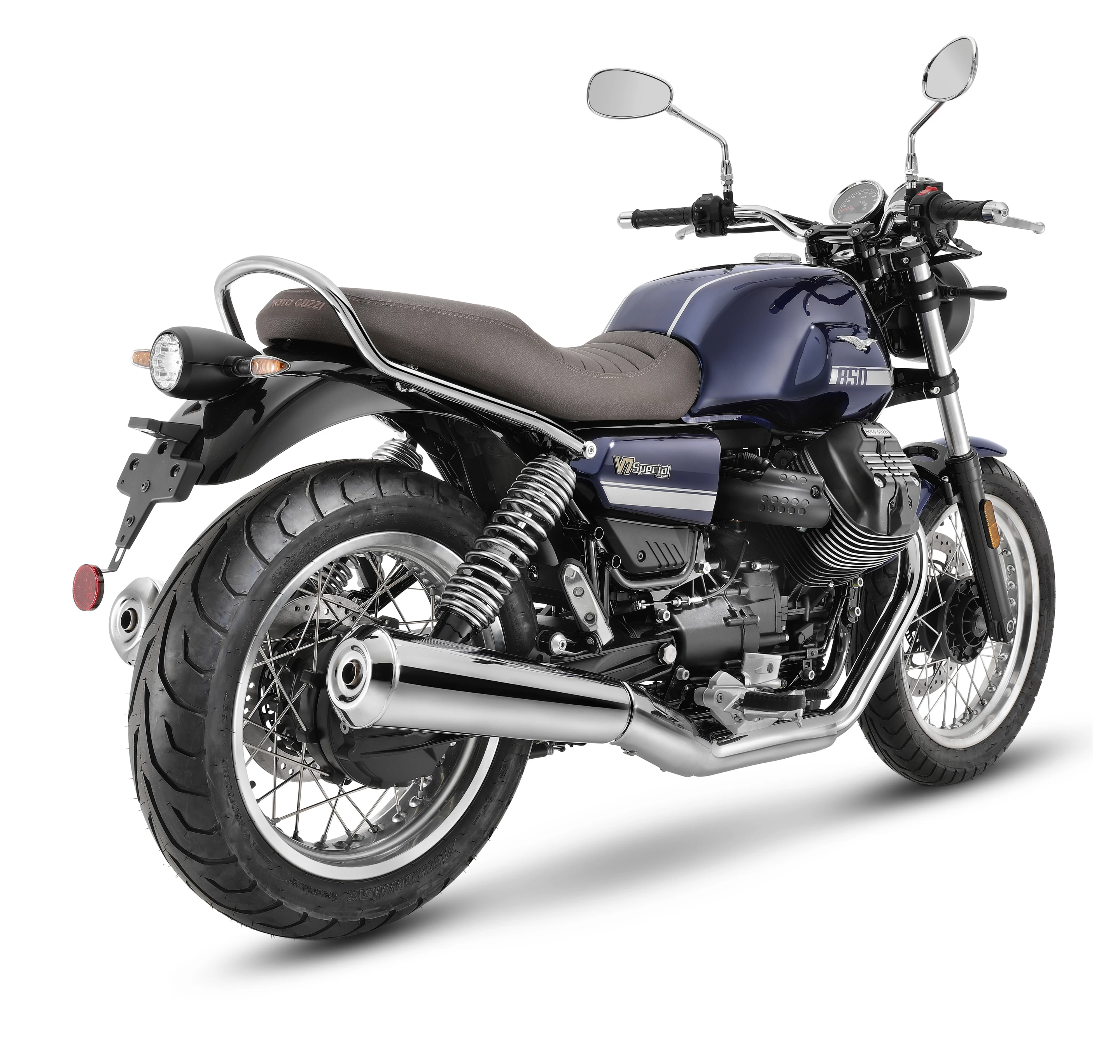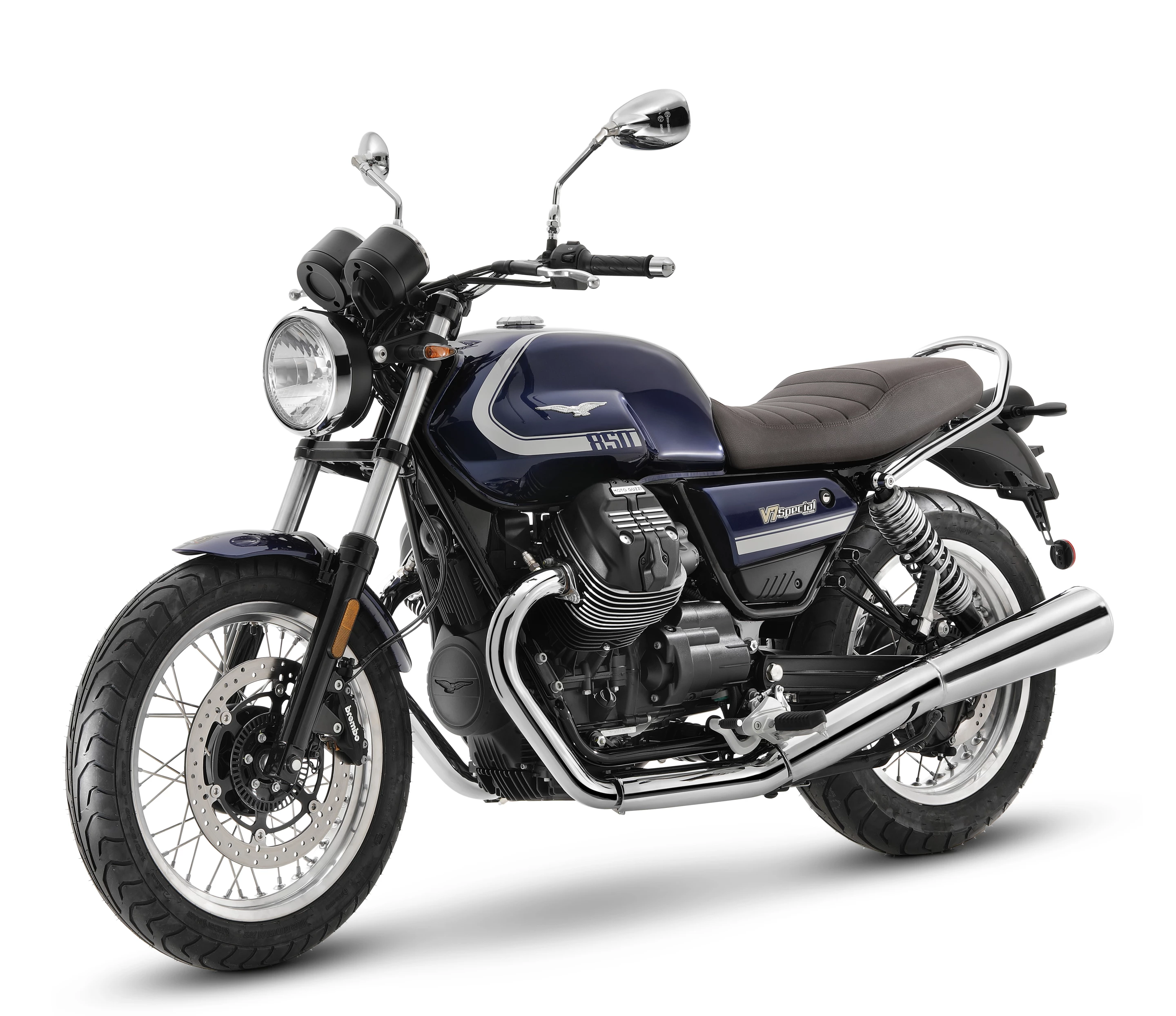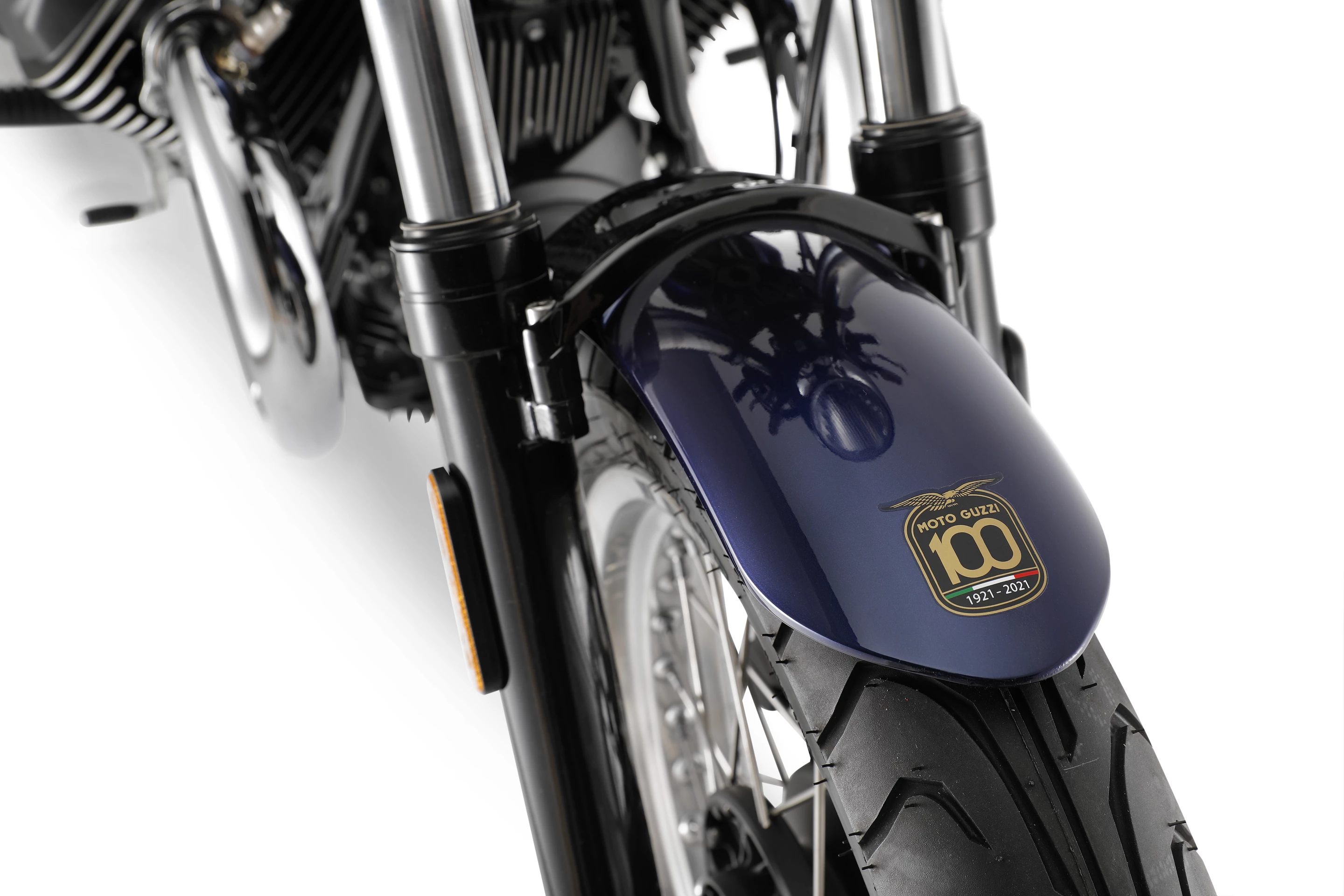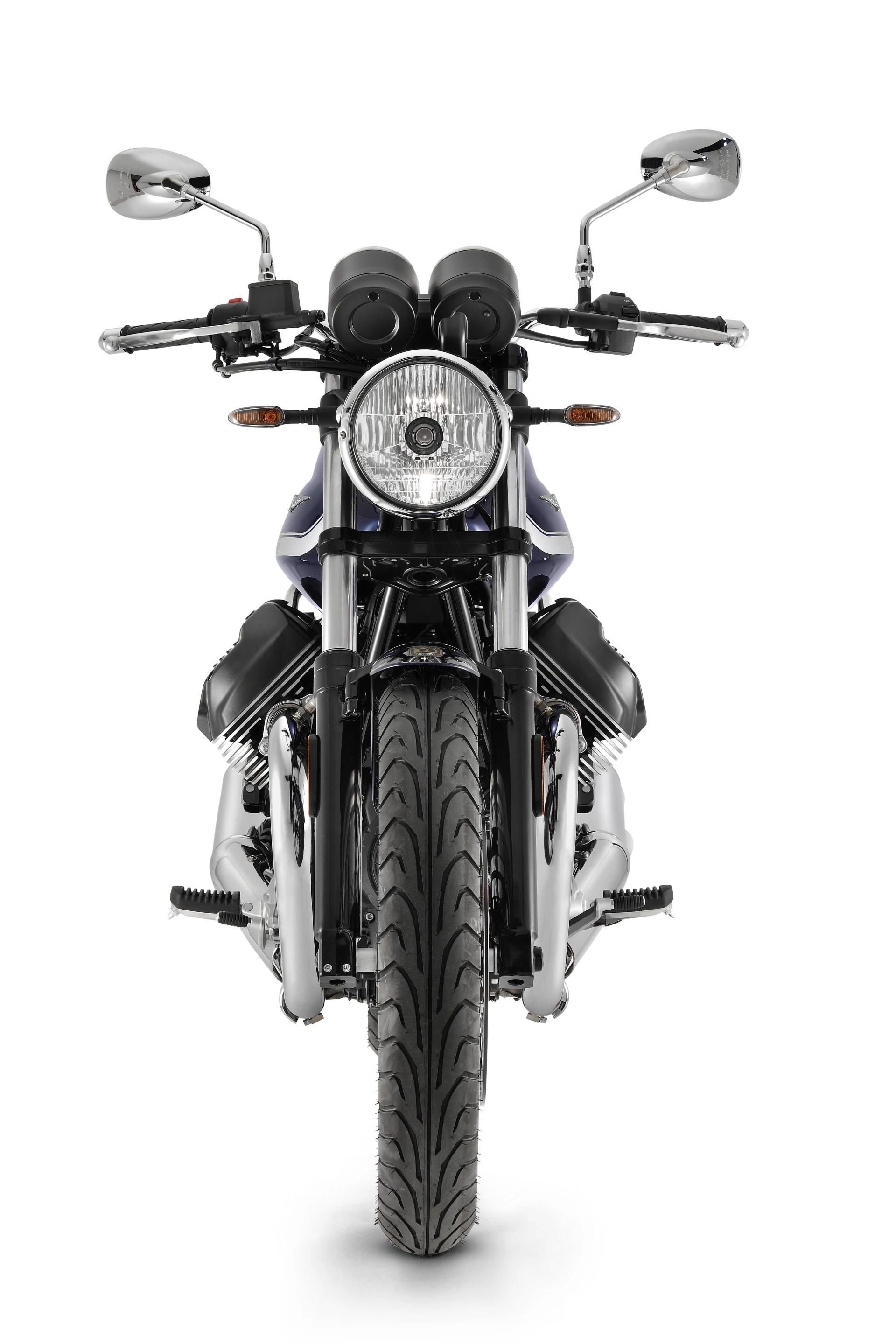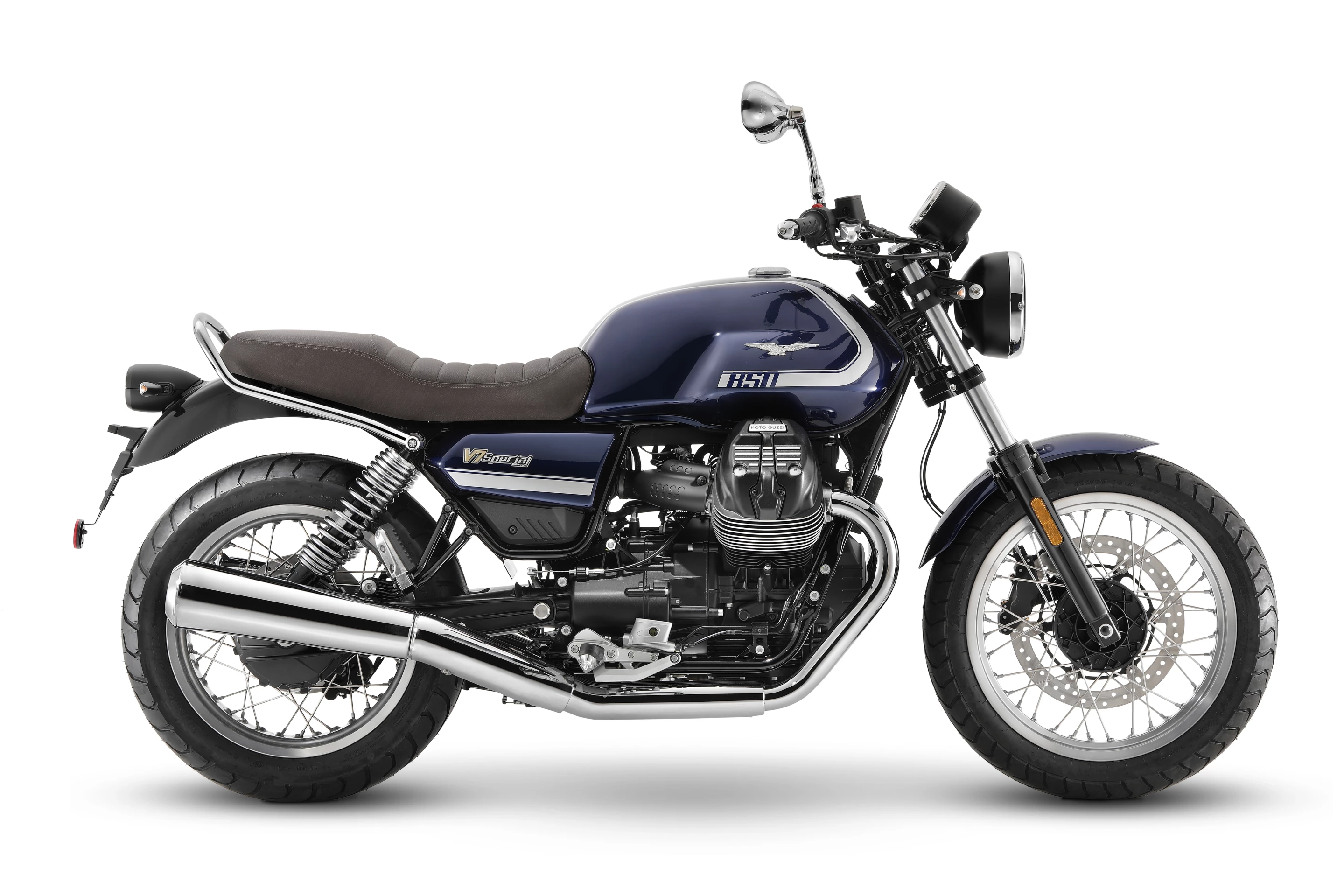There's a new entry point into the world of Moto Guzzi. The fourth-generation V7 roadster gets a bigger 853-cc V2 motor for 2021, complete with a 25-percent hike in peak power.
Moto Guzzi paid its respects to the legendary 1967 V7 roadster with a modern-day reincarnation that was first released in 2007. In contrast to the luscious touring character of the original, the contemporary model’s 750-cc V2 was the smallest in Moto Guzzi’s range, shared with the California 750 cruiser and the Breva 750 roadster.
Producing just 52 hp (38.8 kW), that simple air-cooled, two-valve V2 powered its way through three generations of commercially successful V7 models by combining practical skills with unmistakable character in an affordable package. The latest extensive upgrade came in 2016 in response to the Euro 4 ruleset and included a complete overhaul of the engine for the V7 III. Although the spec sheet would suggest it was just the same engine, in reality it felt significantly stronger due to the different way the same amount of power was delivered via much lighter rotating masses.
One would logically assume that Moto Guzzi went to all the trouble of updating its V2 with next Euro-5 step in mind, but as it turns out it’s is the end of the line for this motor.

Moto Guzzi's 853-cc V2 engine was originally introduced with the 55-hp (41-kW) V9 classic roadster family, before spawning an 80-hp (59.7-kW) offspring for the V85 TT adventurer. Now Moto Guzzi has created a new variant of the same engine for the 2021 V7 which, ironically enough, is no longer "smaller" and in fact outperforms the V9 with its peak output of 65 hp (48.5 kW) and 73 Nm (53.8 lb-ft).
At least Moto Guzzi hasn’t wandered far with the design of the V7, retaining the same basic lines and, above all, the trademark combo of the air-cooled transverse V2 under the characteristic fuel tank that underlines the connection to the original 1967 model.
The Italians haven’t yet released the full specs of the new V7, revealing only the changes over the previous V7 III model. Apart from the engine, these include a revised steel frame, a new pair of rear shock absorbers with more travel, and a new exhaust system. Also, the 17-inch rear wheel hosts a wider 150/70 tire, in place of the previous 130/80, while the front retains the same 100/90-18 size.
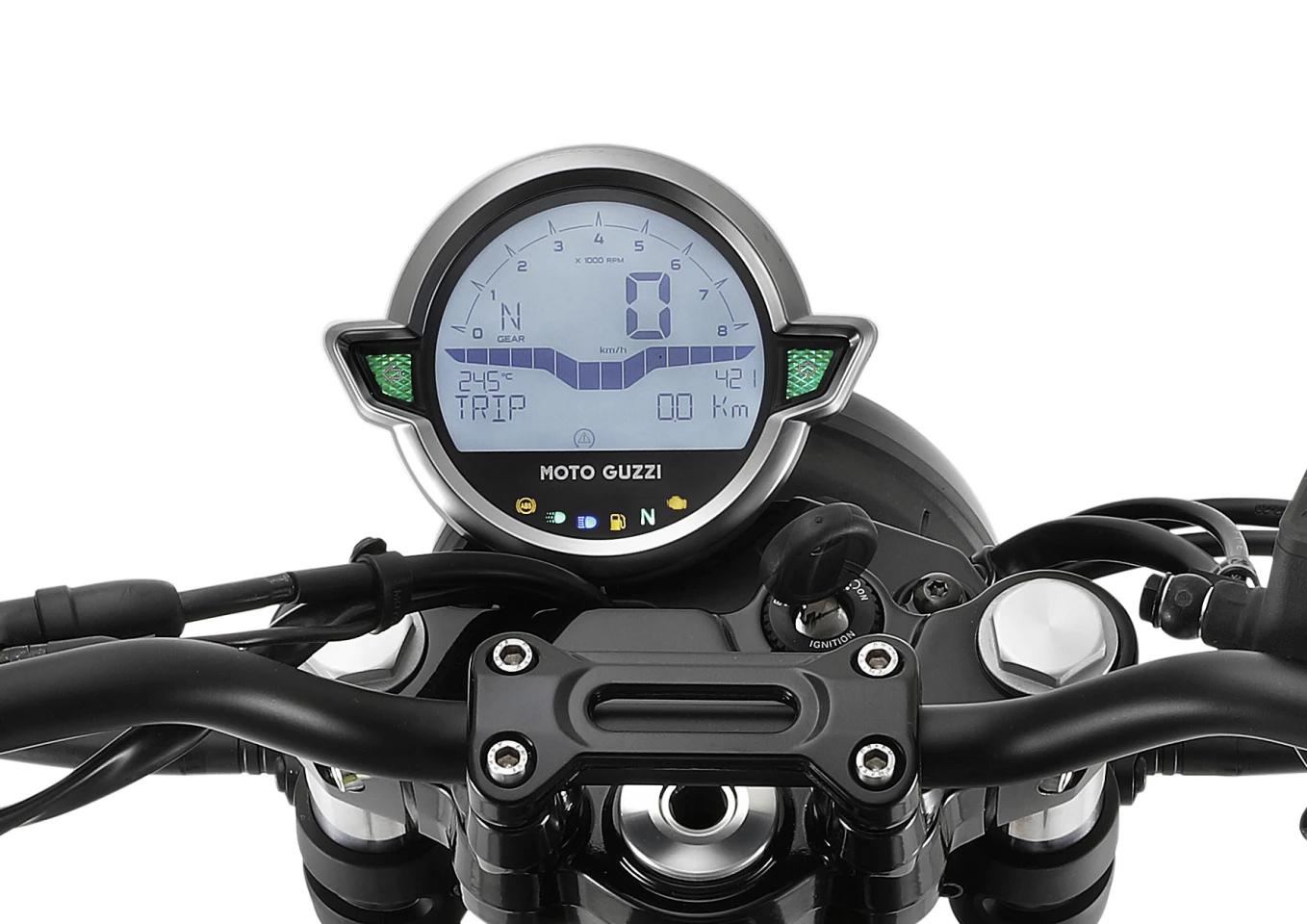
Moto Guzzi has adorned the 2021 V7 with a new LED headlight, dominated by the eagle-shaped DRL light. In fact, eagles soar all over its body – a new circular instrument panel includes wing-like extensions for the indicator lights and another digital eagle within the display, seemingly doubling as the fuel tank level.
The 2021 model will be available in two guises; the V7 Special keeps the traditional round analog clocks (speedo and tacho), a clean headlight without the fancy new DRL light and rolls on polished aluminum spoked wheels, whereas the V7 Stone sports blacked-out gear, cast wheels and the new digital instrument and headlight.
The latin numbering that has marked the progression of this series since the arrival of the V7 II is also gone.
Moto Guzzi hasn’t revealed anything regarding availability and pricing as of yet. This information should become available soon, along with a full press kit detailing important specs that are still missing, such as weight, riding geometry, suspension travel, fuel tank capacity, and possibly more insight on the changes incurred in this version of the engine.
Source: Moto Guzzi


